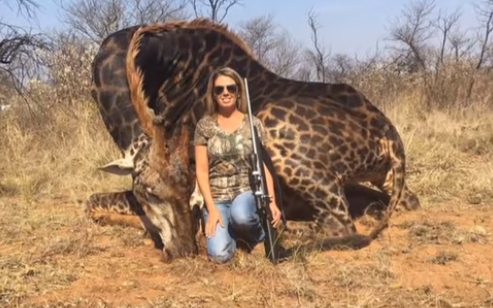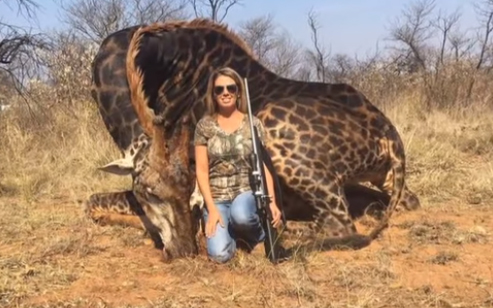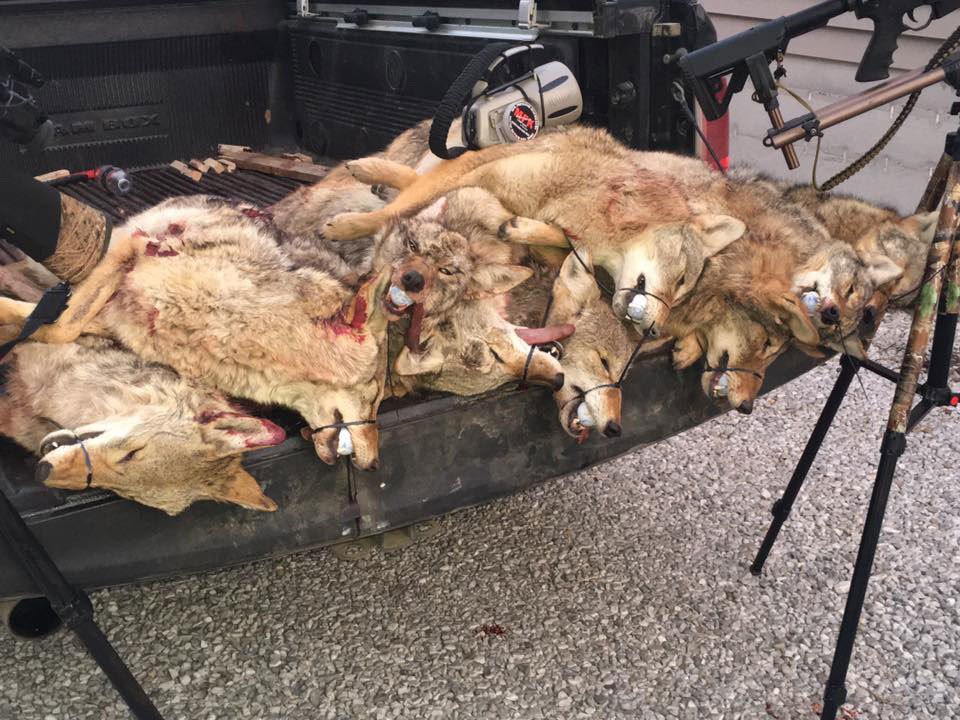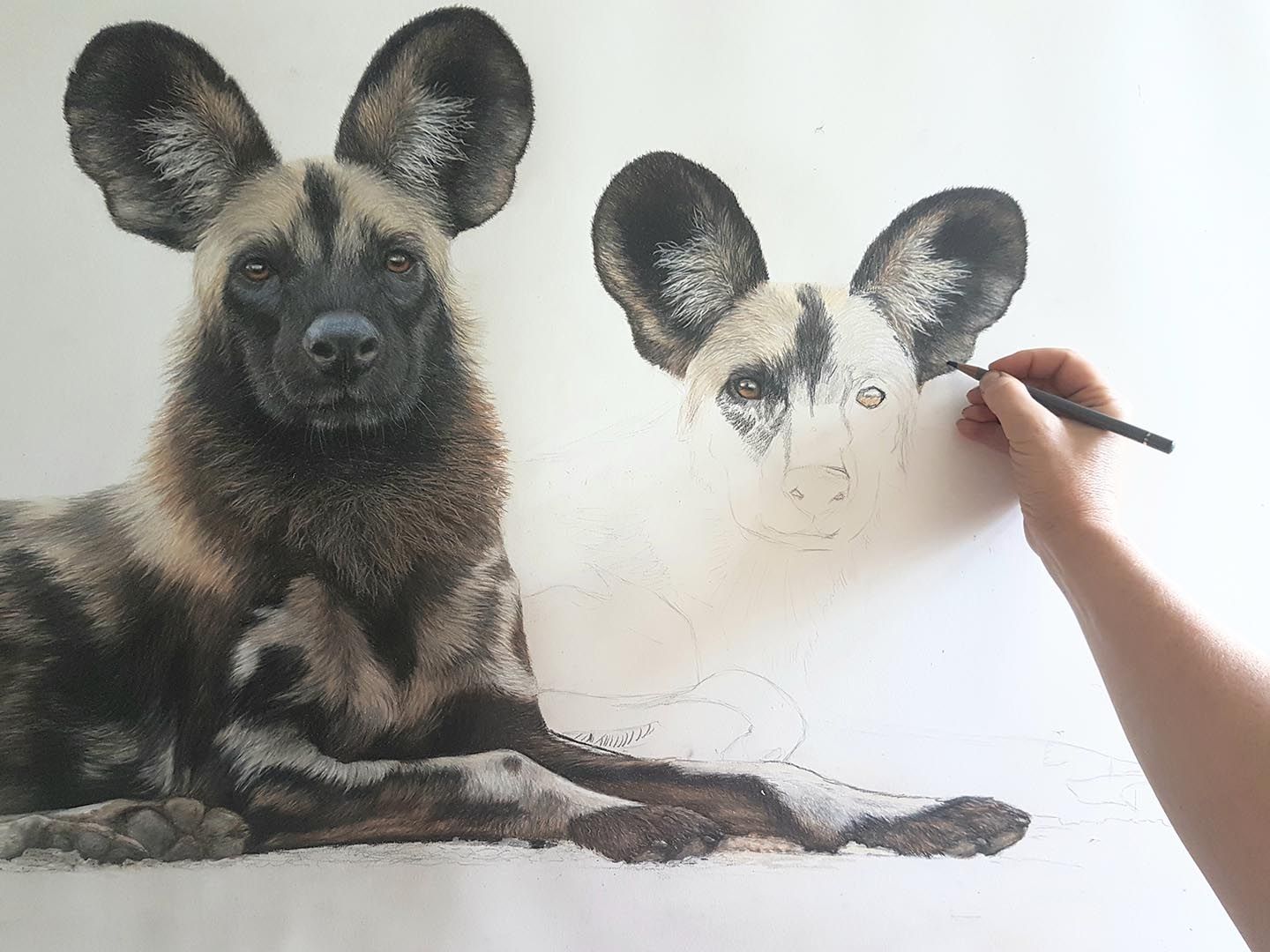
If one trophy hunter can spend $200,000 to hunt exotic animals and say it is not about killing, and it is about helping wildlife conservation is he/she being realistic? Wouldn't one say if it is not about the thrill of killing an animal and it is about the love you have for wildlife then why not use the money in a way that saves our wildlife and their future?

Isn't Trophy hunting more about the money versus conservation? Breeding and raising wildlife is a million-dollar business. Do you believe it is about conservation or about the money that flows into one's pocket?
Let us take a look at one organization in Texas that claims to be about conservation: This organization run by 2 people has convinced wildlife lovers and organizations that they care about conservation and with this approach has easily raised millions of dollars to get the business up and running!
Mojostreaming has spoken with the founder and he believes we are not fully educated on what the organization is about. We have invited him to be our guest on our talk show to help us better understand. We are still waiting on his reply.
We encourage you to look up wildlife ranching in America (most are in Texas) One rancher received over 11 million from investors and I believe they easily convince people they are about conservation versus making money off of selling exotic animals to zoos and making money off of enclosed trophy hunting where people easily pay 10,000+ for a kill.
Please research and see what you find and come up with your own impressions.
Let us watch this news documentary and ask yourself if it is okay to kill 8 to 14 other wild animals to bait one leopard so you can kill that one leopard. The fee to participate in this sport cost over 26,000 with the loss of up to 15 animals. Why? just so you can place the head on your wall, take a photo and brag to your friends, and then sell the skin for you to make money off of? Then tell yourself that you love wildlife and you are helping conservation.
https://www.youtube.com/watch?v=-NdopGBtb0A
ILLEGAL WILDLIFE TRADE IS A HUGE PROBLEM- it generates millions of dollars at the expense of the species. Many animals are on the brink of extinction and one country to blame is the United States of America because that is where the big buyers come from: Click on the link below to learn more:
Not only do we have to worry about the illegal trade of wildlife we have to worry about whether our Zoos are participating in such acts.
Please watch: mojostreaming.com
We can also debate hunting in your local state to control wild animals such as deer, raccoons, turkey, and more. We are not doing enough to make sure hunters are following proper protocol. Are licenses being purchased? Are they tagging and reporting their kill and keeping it to their assigned limit? Are they baiting- using salt block, night cameras, feeding stations? Are they using dogs, scents, and other enticing products to fool the animal? Are they hunting in enclosed fencing like they do in Peru, Indiana? Are they dumping the carcass or taking it to the properly assigned stations for their area? Are they hunting for food or for the trophy and bragging rights? Are they completing the proper permits to be on someone's property, and tagging their stand? It is easy to not follow such guidelines when you have stores like Rural King promoting special feed, salt blocks, and other baiting products during hunting season. How about the hunting contest that is going on in America.

Coyotes were killed at the Southern Illinois Predator Challenge in 2017. COURTESY OF MARC AYERS/HUMANE SOCIETY OF THE UNITED STATES

Charlotte Williams is a
highly respected and increasingly celebrated British fine artist with a
particular interest in wildlife. She is entirely self-taught and was
drawing her first animal portraits as young as nine years old.
Despite being afforded a scholarship to Farnham Art College
in her late teens, she headed instead for South Africa and the ‘bush’, where
she spent several years living and working on a game reserve in the Eastern
Transvaal. Immersed in the raw environment of the veldt, it was here
that Charlotte’s life-long passion for animals and the wild was born, and
where she passed many hundreds of hours wandering, observing and sketching all
that she saw.
On her return to the
UK in the mid-1990s, Charlotte continued to dedicate herself to art,
this time in Brighton. She went on to exhibit her work in numerous shows -
locally, and in London. She has since been in great demand and
the majority of her work today is by commission, both at home and
abroad.
Charlotte’s consuming affection for wildlife
conservation has remained paramount, and her depiction of Cecil The Lion,
who lived primarily in the Hwange National Park in Zimbabwe, has become one of
her iconic portraits. She later auctioned the portrait to
raise funds and awareness of the battle against poaching, and she today
continues to support myriad conservation enterprises and wildlife foundations
across the globe.
Each of Charlotte’s meticulous artworks aims to capture the
soul and spirit of her subjects, from behind the eyes, so that you might know
them and feel them, as if they were living and breathing before you. Her
appreciation of wild animals, coupled with her unapologetic perfectionism -
enable her to create paintings and drawings that are unique and wholly
authentic.
Though now based in her studio in rural East Sussex since
2010 she has an ever growing global following on social media and has
recently been made a signature member of Artists For Conservation. She is
represented by numerous people, including the prestigious London and Sussex
based gallery Rountree Tryon and has exhibited at, amongst others, Masterpiece
Art and Gallery Different in London
.
Mojostreaming is a proud sponsor of this year's 2021 WCFF!
Be sure to watch last year's WCFF finalist and Mojo's favorite Documentary: Trailer: youtu.be
Wach the film here:
https://www.mojostreaming.com/video/635/roam4wild-the-documentary-film
Wildlife Conservation Film Festival (WCFF) is an international film festival based in New York and Los Angeles, that promotes and produces interactive events around independent films that promote sustainability and the conservation of biodiversity. The WCFF has global partnerships in Brazil, China, Kenya, and Scandinavia as of November 2019.
The Wildlife Conservation Film Festival was founded in 2010 by Christopher J. Gervais, FRGS at first as a 2-day event and has now grown to a 10-day festival.[1] It is a juried event with attendees and participants that include international wildlife conservationists, filmmakers, photographers, scientists, and people across the globe that work toward the preservation of global biodiversity. WCFF has a global educational outreach program with secondary and post-secondary institutions in North and South America, Asia, Africa, and Europe as of 2019.
Be sure to visit their website: wcff.org
Board of Advisors:
Jane Alexander
Casey Anderson
Gale Brewer
Holly Marie Combs
Fabien Cousteau
Dr. Sylvia Earle
Dr. Birute’ Mary Galdikas
Dr. Jane Goodall, DBE
Dr. David Guggenheim
Dr. Paula Kahumbu, OGW
Ron Magill
Ian Redmond, OBE
Dr. E.O. Wilson
Dr. Patricia C. Wright
David Hamlin

A Zoo in My Luggage by Gerald Durrell
In 1957, Gerald Durrell and his wife set out to "collect" animals from Bafut in the British Cameroons of West Africa for their zoo, a location for which was yet to be secured. They returned with a menagerie of creatures and the novel is an account of how he shifts the animals around England while scouting for a permanent location. 'Throughout my life,' he writes, 'I have rarely if ever achieved what I wanted by tackling it in a logical fashion.' A Zoo in my Luggage is a hilarious true story of animal relocation written in Durrell's inimitable style that combines charming descriptions with dry humour. His timeless classic, My Family and Other Animals, is a childhood adventure. This novel captures his unwavering love for wildlife and nature as an adult.

The Jungle Book by Rudyard Kipling
Who can forget Mowgli? The little boy who was raised by a pack of wolves in the jungles of India. The book follows his adventures with all kinds of animals—Bagheera the black panther and Baloo the bear who teach him the important laws of the jungle to Sher Khan, the tiger who is Mowgli's mortal enemy. Other stories include Rikki-Tiki-Tavi, the tale of a brave mongoose who saves a family from two vicious cobras and Toomai, a young mahout and his elephant. The book transports you to a world of forests and animals, one riddled with meaning and symbolism in a way that can be enjoyed by both children and adults alike.

Man-Eaters of Kumaon by Jim Corbett
After much persuasion from his friends and family, Jim Corbett finally penned down this riveting memoir of his encounters with big cats in the Indian Himalayas. First published in 1944 by Oxford University Press, Corbett used stories from his previous book titled Jungle Stories as its basis. The stories follow him as he tracks and kills several man-eating tigers in India, including the terrifying Champawat Tigress, who set a world record by killing 436 people in Nepal and India before being shot by Corbett in 1907.

The Snow Leopard by Peter Matthiessen
The Snow Leopard is a day-by-day account of the author's journey into the remote Dolpo region of the Nepal Himalayas with his friend, the biologist George Schaller, to study the mating patterns of the Himalayan blue sheep. He also hopes to catch a glimpse of the elusive snow leopard which ultimately becomes a metaphor for his own spiritual quest as the book progresses. "Figures dark beneath their loads pass down the far bank of the river, rendered immortal by the streak of sunset upon their shoulders." His empathy towards the natural makes this book one of the greatest examples of both nature and travel writing.

The Elephant Whisperer by Lawrence Anthony with Graham Spence
Lawrence Anthony, the wildlife conservationist, took in a herd of wild African elephants at his Thula Thula game reserve. The matriarch and her baby had been shot leaving the herd traumatized and highly dangerous. Anthony realized he might be their last chance of survival. This book is the incredible story of his struggle to form a bond with these elephants who ultimately accepted Anthony as their matriarch. When he died in 2012, the same herd of elephants made a twelve-hour journey to his home to mourn his death.